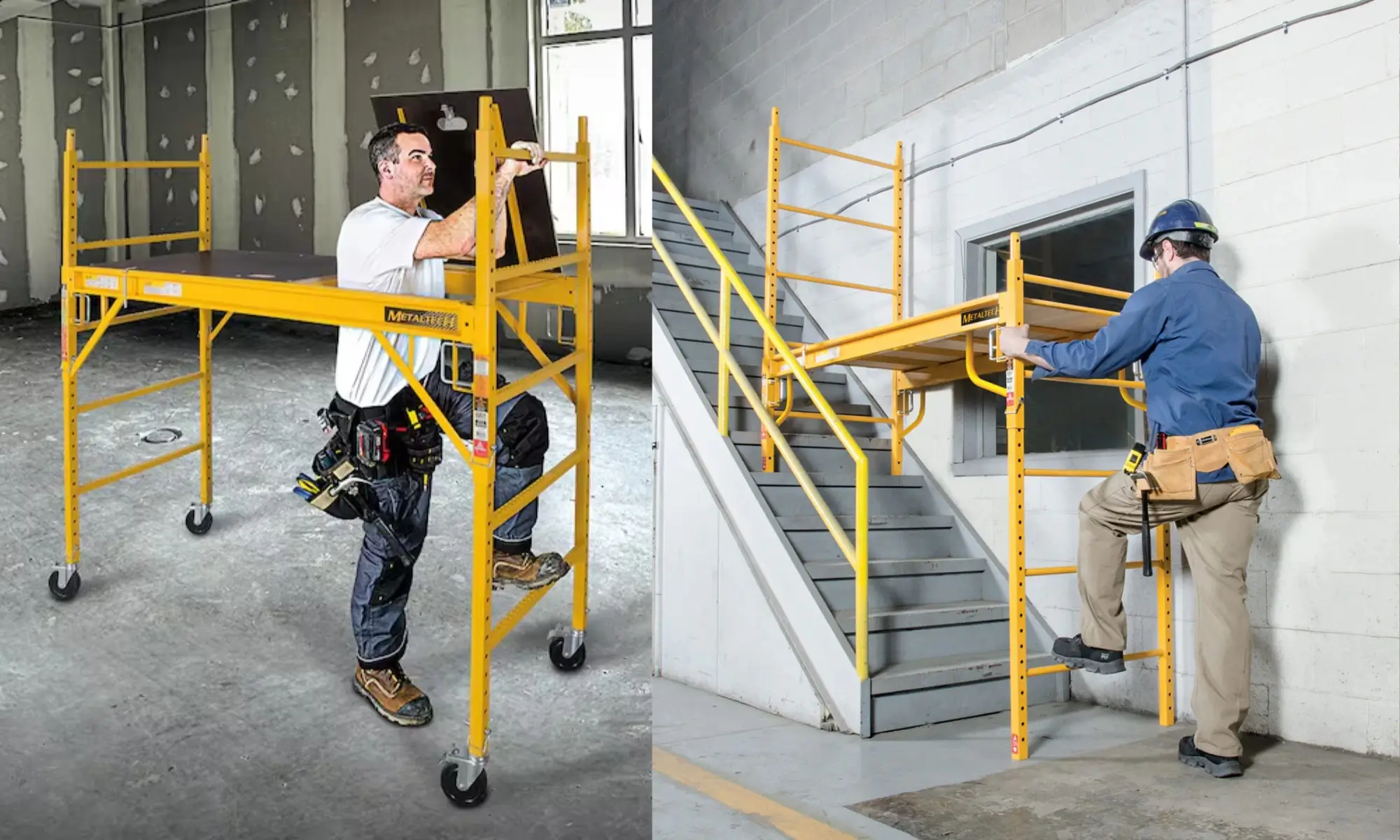In the world of construction and renovation, efficiency and safety are paramount. Whether you’re a professional contractor or a DIY enthusiast, having the right equipment can make all the difference. One such indispensable tool is the Baker’s Scaffold. This comprehensive guide will delve into what a Baker’s Scaffold is, its components, how to set it up, safety considerations, and why it might be the perfect addition to your toolkit.
What Is a Baker’s Scaffold?
A Baker’s Scaffold, also known as a mobile or rolling tower scaffold, is a modular, manually propelled scaffold platform. It is commonly used on construction sites and in various trades for performing overhead and elevated work tasks. Its design allows for easy movement, quick assembly, and adjustable platform heights, making it particularly useful for indoor projects where ceilings or elevated walls need to be accessed.
Why You Need a Baker’s Scaffold
Enhanced Mobility
The Baker’s Scaffold is equipped with integrated wheels at its base, allowing for effortless repositioning without the need to disassemble the structure. This mobility reduces downtime and increases productivity, especially when working over larger areas.
Adjustable Working Heights
With adjustable platform heights, it caters to a variety of tasks at different elevations. Some models even allow for stacking, providing additional reach while maintaining stability.
Increased Safety Over Ladders
Unlike ladders, Baker’s Scaffolds offer a stable work platform, enabling workers to handle larger materials safely. The spacious platform reduces the risk of falls and provides a more secure footing, essential for tasks that require precision and balance.
Efficiency in Work
The scaffold’s design allows for a larger working area compared to ladders, minimizing the need for constant repositioning. This efficiency translates to time saved and increased productivity on the job site.
Components of a Baker’s Scaffold
Understanding the components is crucial for safe assembly and use:
- End Frames: Vertical structures at each end of the scaffold, often with horizontal bars for added stability and to facilitate access to the platform.
- Side Braces: Horizontal supports that connect the end frames, providing structural integrity.
- Work Platform: Typically made of sturdy plywood with metal edges, it serves as the standing surface for workers.
- Casters: Lockable wheels attached to the base of the end frames for mobility.
- Guardrails/Safety Railings: Installed on upper levels to prevent falls, especially when working at heights exceeding safety regulations.
- Outriggers: Extensions that increase the base dimensions for added stability, particularly when the scaffold is stacked.
Setting Up a Baker’s Scaffold
Assembly Steps
- Install Casters: Attach the lockable wheels to the end frames, ensuring they are secured with retention devices.
- Connect Side Braces: Attach the side braces to the end frames at the desired height, using spring-loaded locking pins for secure placement.
- Place the Work Platform: Set the platform onto the side braces and lock it in place with the latching pins.
- Add Safety Features: Install guardrails if required, especially when working at higher elevations or stacking scaffolds.
- Secure Outriggers: If stacking or working at heights that require additional stability, attach the outriggers as per the manufacturer’s instructions.
Important Considerations
- Use Compatible Components: Always use components designed for your specific scaffold system to ensure structural integrity.
- Follow Manufacturer’s Instructions: Each scaffold may have unique assembly requirements; adhering to these ensures safety and functionality.
- Inspect Before Use: Conduct a thorough inspection to confirm that all parts are in good condition and properly secured.
Safety Hazards and How to Mitigate Them
While Baker’s Scaffolds offer numerous advantages, they can pose significant risks if not used correctly.
Common Hazards
- Falls from Height: One of the most serious risks, especially when working without proper fall protection.
- Scaffold Tipping: Can occur due to instability, especially when climbing on the end frames or overloading.
- Structural Failures: Resulting from improper assembly or using incompatible components.
Safety Measures
- Use Fall Protection: Install guardrails or use personal fall arrest systems (PFAS) when working at heights specified by OSHA or local regulations.
- Ensure Stability: Use outriggers when necessary, and avoid exceeding the scaffold’s height restrictions (generally, the height should not exceed four times the narrowest base dimension without additional support).
- Proper Access: Avoid climbing the exterior end frames. Use built-in ladders or access points to prevent destabilizing the scaffold.
- Lock Casters: Always lock the wheels when the scaffold is stationary to prevent unwanted movement.
- Regular Inspections: Before each use and after any modifications, inspect the scaffold for defects or issues.
Industry Standards and Regulations
Adherence to industry standards is not just about compliance but ensuring the safety of everyone on the job site.
Regulatory Bodies
- Occupational Safety and Health Administration (OSHA): Provides regulations under 29 CFR Part 1926 Subpart L.
- American National Standards Institute (ANSI): Offers standards like ANSI A10.8 for scaffolding safety requirements.
- Canadian Standards Association (CSA): References standards like CSA S269.2 and CSA Z797 for access scaffolding.
Key Requirements
- Training: Workers must be trained to recognize hazards and properly use the scaffold.
- Supervision: A competent person should oversee the assembly and use of the scaffold.
- Design Compliance: Scaffolds must be used within the manufacturer’s specifications and designed to resist tipping with at least twice the load exerted on them.
- Load Limits: Do not exceed the rated capacity of the scaffold.
Conclusion
A Baker’s Scaffold is a valuable asset for anyone involved in construction, renovation, or maintenance tasks that require working at elevated levels. Its mobility, adjustable height, and spacious platform make it superior to ladders for many applications. However, safety must always be a priority. By understanding its components, proper setup procedures, and adhering to industry regulations, you can maximize the benefits of a Baker’s Scaffold while minimizing risks. Investing in a Baker’s Scaffold not only enhances efficiency but also contributes to a safer working environment.
Remember: Always consult the manufacturer’s instructions and local regulations before using a Baker’s Scaffold. Safety is a shared responsibility—stay informed, stay safe.

